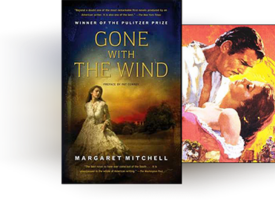Whenever I begin a short story, I remind myself of two things: to try to get in touch with readers’ senses as much as possible by writing something to see, hear, touch, smell, taste, and feel (emotionally), and to try to keep nine points, specifically, in mind when writing my story in hopes of composing a tightly-written story that sticks in readers’ minds. Those nine points are as followed:
1. Focus
Some of the most successful short stories I’ve read are the stories that stuck to their themes and storylines. They pulled me and kept me reading by maintaining a strong focus. It seems the more tightly drawn a short story is, the better.
2. Theme
While every story I write won’t have some sort of deep, underlying message to it, I still like asking myself what exactly will my story be about. I try to answer the question in one or two sentences whenever possible, and notice that when I do, I usually spend less time smoothing out a story, trying to make it “say” what I want it to say. If you’re aiming for a clear message, then try asking yourself just what is that underlying message or statement you’re trying to convey to readers? Knowing what you want to say might lead you to tighten your writing, and
maybe end up with a story that will linger in readers’ minds.
3. Time Span
Short stories usually cover a short time period. I try to remember to keep my short stories narrowed down by staying focused on the story’s theme, and working to paint a picture explaining the main event for readers. In creating three-dimensional characters, I work to keep all of the characters’ emotions, thoughts, and actions relevant to the story.
4. Hook
“Begin your story with a bang.” We’ve all heard that one, haven’t we? However, with short stories, I’ve noticed that it’s more often sage advice than not. Beginning your short story with conflict, whether you choose to do it through action, dialogue, or atmosphere and mood, can hook readers and perhaps keep them reading.
5. Description
I’ve actually come across submission guidelines where an editor stressed, “More story; less description.” Depending on the market you’re planning on submitting to, story word limits might only allow you a small amount of description throughout your stories. A publication that wants more action than descriptive writing in stories, and publications that cap their word counts at around 3,500 to 5,000 words, usually place strict limits on the amount of words you can spend on description. On the other hand, publications with story word limits from around 8,000 to 10,000 allow you to spend much more of the story on descriptive writing. Regardless of word counts, I try to remember to make every word count toward the story by avoiding over-describing settings, actions, or characters.
6. Characters
It’s important that I remember not to include too many characters in a short story. Too many characters might cause the story to spin out of control. Sure, I could solve this problem by extending the short story into a novella or novel. But if my aim is to write only a short story, I try to limit the characters. Two or three characters, or, sometimes, even one character, seems sufficient enough for a short story. Only you will know how many characters it’ll take to portray your story, but if it begins to seem like your story is growing out of control when you don’t want it to, then try to limit the number of characters.
7. Setting
I recently read an editorial called “This Story Doesn’t Stand Out,” and thought it was great insight into an editor’s mind. The editorial touched on some of the reasons why an editor might reject your story. One of those reasons was that many of the stories already accepted were set in similar settings, such as the present-day world. The article also confirmed my suspicion of why I’d finally gotten published at SDO Detective, a former online mystery publication, after several unsuccessful attempts–the last mystery tale I submitted was set in Ancient Egypt.
Sure, mystery stories have been set in Ancient Egypt before, but there were none at SDO Detective, at that time. So, I took the chance, and submitted my story, “Minkah’s First Case,” which featured a crime-solving scribe. While setting still isn’t my main concern when I begin a short story, I make a conscious effort to try to place the story in a unique setting. Maybe by doing so, the story will head down an unexpected road and end up a better read as a result of the journey.
8. Twist
Every story doesn’t have to end with a twist, but an occasional twist can be fun. I enjoy trying to write some of my own short stories with a twist. You can surprise your readers with an ending they should have seen coming, and maybe even leave your readers guessing about your character’s fate after the story has ended. I recently read a short story that offered readers three different endings. It wasn’t a twist seen often, so I really enjoyed coming across such a story. It was unpredictable and memorable, as are most successful twists. Have fun trying to create your own tale with a twist.
9. Denouement
I always try to end my short stories in a sensible, satisfying way. A reader left too far in the dark by the end of the story will be an unhappy reader. As a reader, I don’t mind being left to wonder a bit about what else might happen to a character after the story has ended, but not to the point where I’m scratching my head at something that doesn’t quite make sense where the story is concerned. As a writer, it’s important that I try to write a logical, mostly unpredictable ending that tie up all the major loose ends.
While I’m sure I haven’t quite written that short story that sticks in readers’ minds, I’ll keep trying by continuing to practice these nine points whenever I write a short story. Don’t be afraid to tighten your story, begin with a “bang,” or let your story have a message, a brief time span, good description, interesting characters, a strange setting, and a twist. Happy writing!



